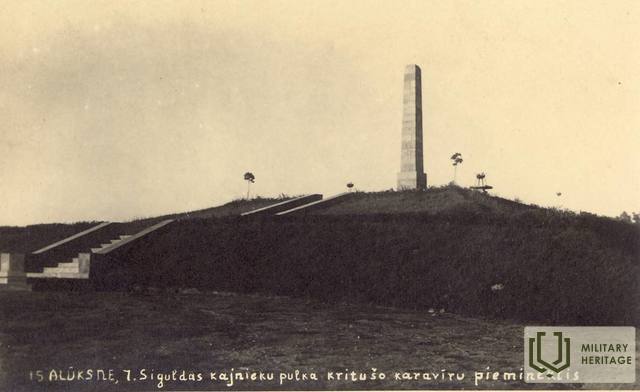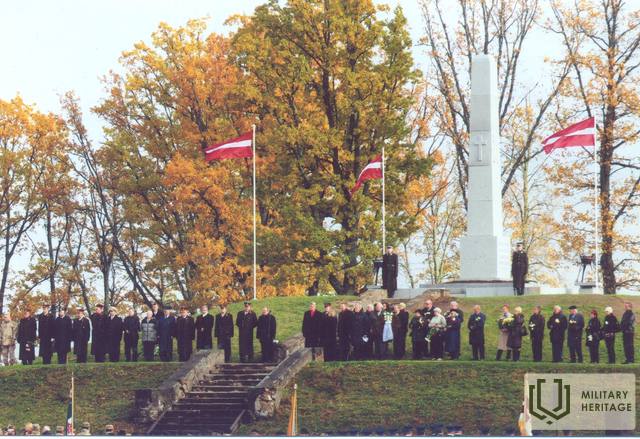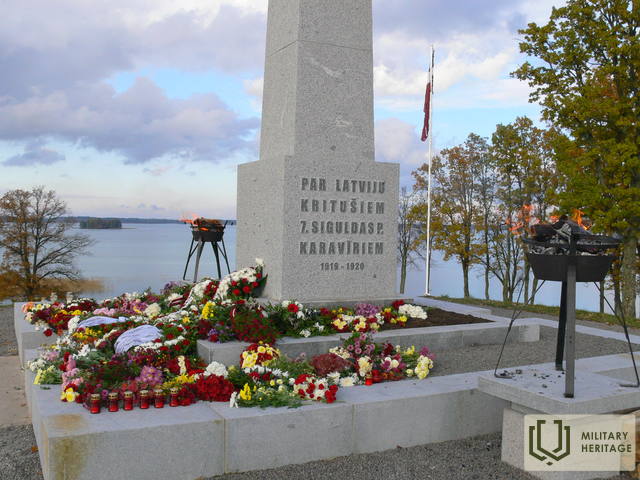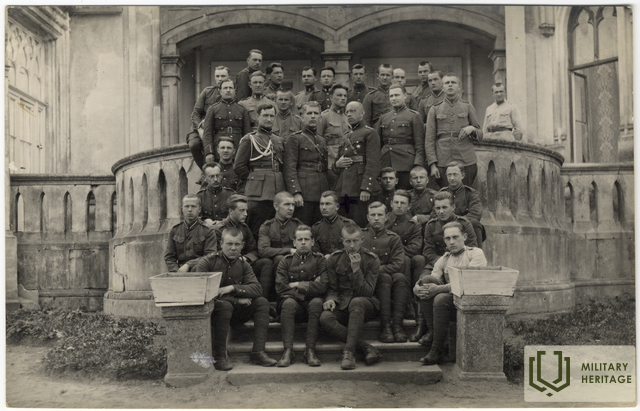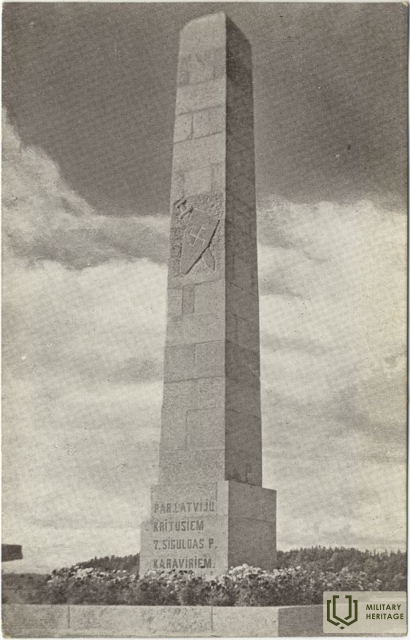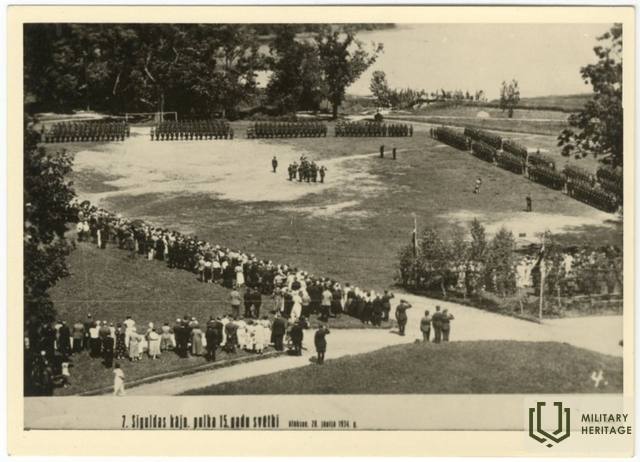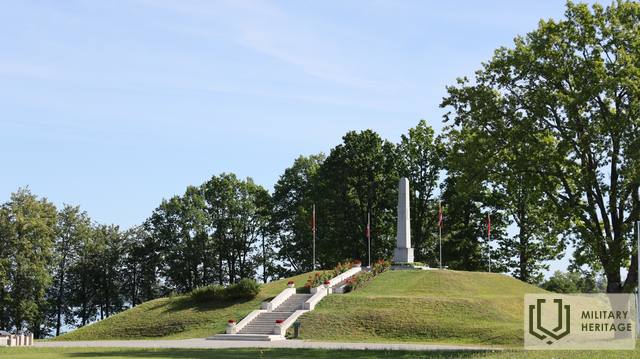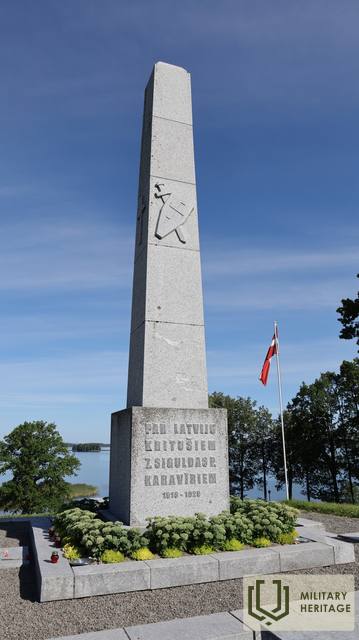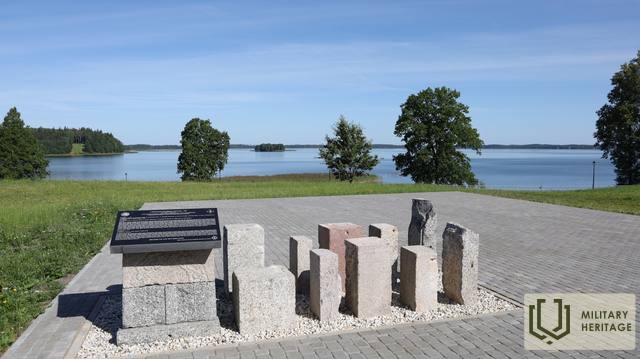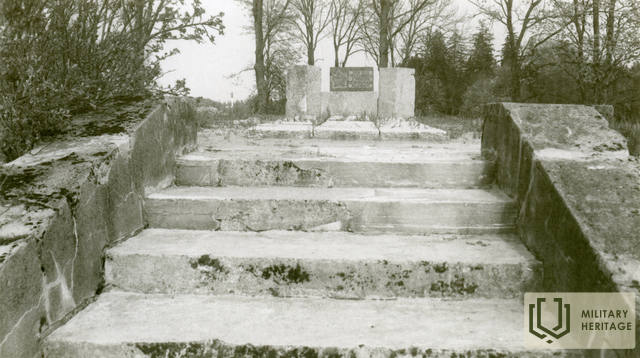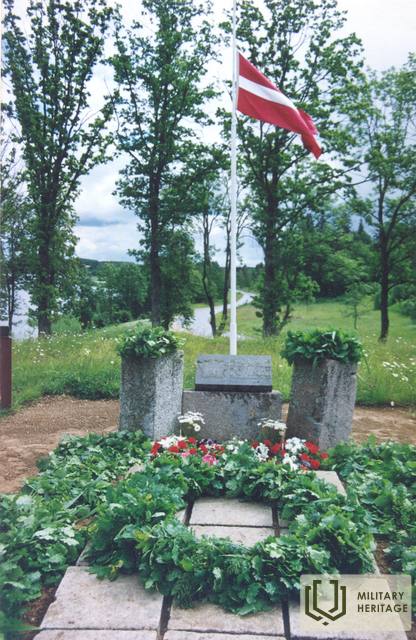Monument to the soldiers of the 7th Sigulda Infantry Regiment who died in the Latvian War of Independence
Memorialinis vieta
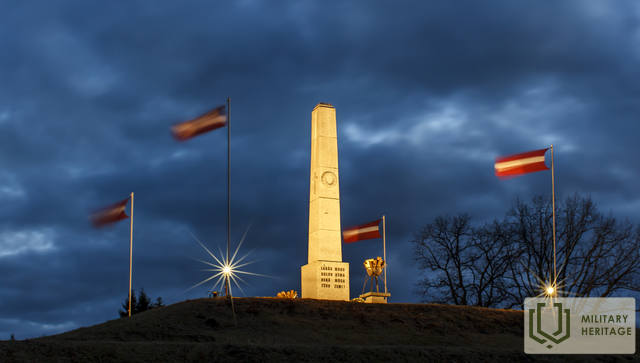

Located on the shores of Lake Alūksne, on the edge of Pleskavas Street (Kolberg Road).
On June 22, 1923, the President of Latvia, Jānis Čakste, unveiled a monument to the fallen soldiers of the 7th Sigulda Infantry Regiment. The monument is based on the design of the artist Jūlijs Miesnieks.
The soldiers of the regiment also improved and maintained the area around the monument. Soldiers gathered at the monument on the eve of the regiment's annual holiday, when the holy fire was lit, as well as on the day of the regiment's year after the parade and intercession in the garrison cemetery.
1940/1941 The Bolsheviks removed and destroyed the plaque in 1953, but the monument itself was demolished in 1953 and its stones were laid in the foundations of the corner of the barracks house.
At the beginning of the Awakening, in the autumn of 1989, the vicinity of the destroyed monument, which was still in the territory of the USSR occupation forces, was cleaned up. On November 11, a temporary granite memorial was unveiled at the former location of the monument, with the text: "The monument of the 7th Sigulda Infantry Regiment will be restored in this place on November 11, 1989."
Thanks to the initiative of U. Veldre, the head of the Alūksne Brothers Cemetery Committee, the restoration of the monument was started and on October 16, 2009 the restored monument was unveiled.
Unlike the original monument, a cross was created on the obelisk regiment instead of a chest sign. Both sculptures of the monument were wrought by the sculptor Ainars Zelcs. Both the part of the 22 original obelisk blocks found on the territory of the National Armed Forces Infantry School and the newly built blocks were used for the restored monument.
On June 20, 2019, as part of the centenary of the Sigulda Infantry Regiment, a memorial site and a granite memorial plaque to the fallen soldiers of the unit were unveiled at the foot of the monument hill. The memorial site was built with funds donated by the staff of the Infantry School of the National Armed Forces.
Panaudoti šaltiniai ir literatūra:
Sigulda Regiment Memorial Fund. In memory of the Sigulda Regiment, 1919. 20-VI 1959. Nebraska 1959, pp. 15-22
Lismanis, J. 1915-1920. In memory of battles and fallen soldiers: memorial sites of the First World War and the Latvian Liberation Fight. Riga 1999, p
Yesterday, the President unveiled a restored monument dedicated to the fallen soldiers of the 7th Sigulda Infantry Regiment in Alūksne. Available: eDruva: Cēsis and Vidzeme news. 10/17/2009
In Aluksne, a monument to the soldiers of the 7th Sigulda Infantry Regiment who fell in the LAC. Cemetery and memorial sites for Latvian soldiers. Available at: https://karavirukapi.blogspot.com
Susijusi laiko juosta
Susijusios temos
Susijusi istorija
7. Siguldos pėstininkų pulko formavimas
1919 m. birželio 20 d. Naukšėnų dvare, Rūjienos apylinkėse, pagal Šiaurės Latvijos brigados vado pulkininko Jorgio Zemitano įsakymą pradėtas formuoti 7-asis Siguldos pėstininkų pulkas. Iš pradžių iš Šiaurės Latvijos brigados rezervinio bataliono buvo suformuota nedidelė kovinė grupė, kurią sudarė 22 karininkai ir 1580 karių, kuri pirmojo vado Oskaro Dankerio garbei buvo pavadinta Dankerio divizija. Po kelių dienų dalinys buvo įtrauktas į 3-iojo Jelgavos pulko 2-ąjį batalioną, o rugpjūčio 23 d., papildžius kuopa, į 7-ąjį Siguldos pėstininkų pulką.
Atminimo akimirka Garnizono kapinėse
Atkūrus Latvijos nepriklausomybę Alūksnės brolių kapinių komiteto vadovas Uldis Veldre prisiėmė atsakomybę už Garnizono kapinių priežiūrą, su Alūksne susijusių LKOK poilsio vietų nustatymą, atminimo ženklų įrengimą Įgulos kapinėse.




